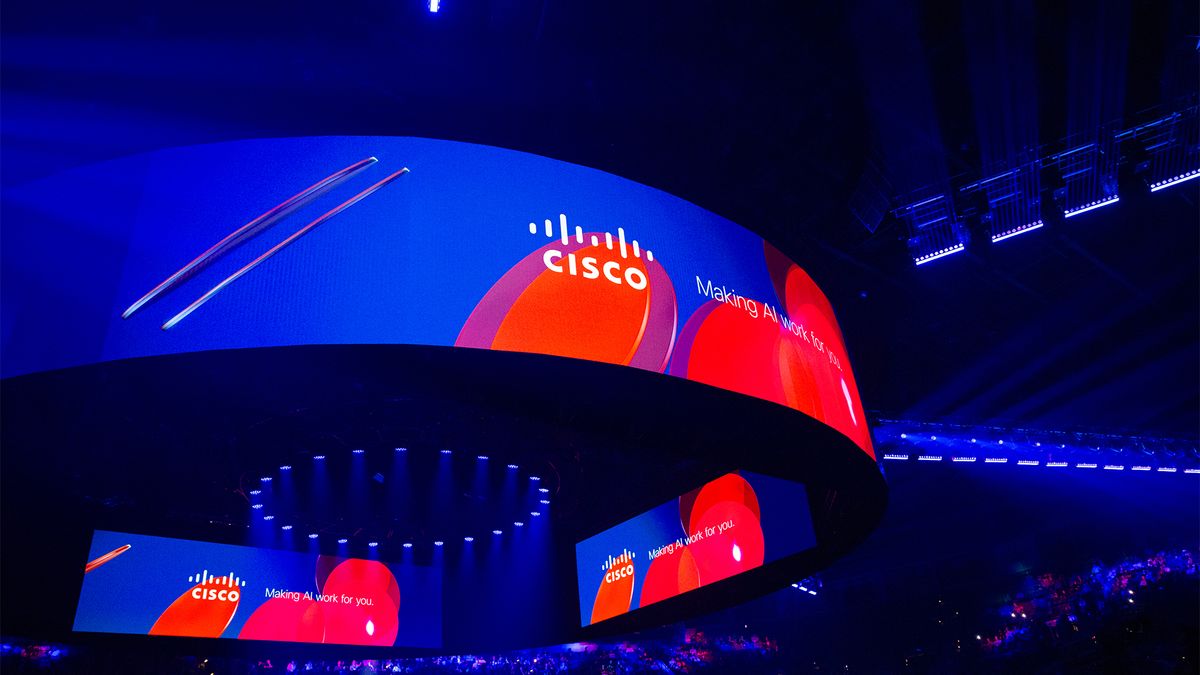Cisco unveils first product integrations since Splunk acquisition
Cisco said the combination of observability technologies will enable customers to spot infrastructure problems faster

Cisco has unveiled the first fruits of its $28 billion acquisition of Splunk, with a series of integrations combining the duo’s observability technologies.
Cisco completed acquisition of Splunk – its biggest ever – earlier this year. Spunk’s products collect security information and event management across a customer’s enterprise technology infrastructure to spot any sort of anomalous behavior.
Now, Cisco has started some integrations between its monitoring tools and those from Splunk. Observability tools collect and analyze data from infrastructure and networks to spot – and hopefully – resolve issues before they impact the business.
In the keynote on the second day of Cisco Live, Tom Gillis, general manager for security products at Cisco, said the combination of Cisco and Splunk will unlock data that’s invisible to security teams right now.
Network security was services that came in a box, but that is now being broken up into smaller pieces nearer to the user – secure access services edge (SASE). But the next step for security is even more fine-grained security controls aimed at unlocking more internal data with technologies like Cisco’s recently announced Hypershield product, he told the audience in Las Vegas.
Diving deeper into data and applications will also create three orders of magnitude more data than security teams are looking at today, Gillis said. This, he noted, is where Splunk comes in.
Cisco said that, as a result of integrating these tools, organizations would have improved visibility across their environments including on-premises, hybrid, and multi-cloud, while using real-time analytics for faster, more accurate detection, investigation, and response.
Cloud Pro Newsletter
Stay up to date with the latest news and analysis from the world of cloud computing with our twice-weekly newsletter
“By bringing together Splunk and Cisco observability solutions, customers now have unified visibility across their entire digital footprint so they can detect, investigate and resolve problems faster to create a reliable, resilient experience for their users,” said Tom Casey, SVP and GM for products and technology at Splunk.
“Having full control over their data helps them make more targeted, effective and smarter investments in their digital systems and services, allowing them to better leverage their entire digital footprint to attract more business and grow the company.”
Cisco said new unified experiences across Cisco and Splunk observability products enable better efficiency and accuracy in troubleshooting hybrid environments.
For example, a new single sign-on (SSO) feature will help simplify and streamline shared workflows between Cisco AppDynamics and Splunk products.
Meanwhile, the introduction of context-aware deep linking will enable Cisco AppDynamics customers to switch straight to logs in the Splunk Platform as part of their troubleshooting workflow, which should result in faster mean time to resolution.
Single Sign-on and Log Observer Connect for Cisco AppDynamics, part of the preview of the Unified Observability Experience, will be generally available in the third quarter of 2024
Cisco also showcased a raft of other integrations during the day-two keynote. This included the launch of Splunk Log Observer Connect for Cisco AppDynamics. Available in July, this combines the Splunk Platform with Cisco AppDynamics APM to drive faster, in-context troubleshooting across on-premise and hybrid environments.
Cisco said this integration allows SaaS and on-premises customers to analyze logs when troubleshooting application performance issues.
Similarly, the Cisco AppDynamics integration with Splunk Enterprise/Splunk Cloud and Splunk ITSI will allow users to correlate application metrics and events from AppDynamics with other data about systems and services in Splunk Enterprise and Splunk Cloud.
Cisco AppDynamics will also be available on Microsoft Azure, the company told attendees. This expansion of cloud-hosted observability brings Cisco AppDynamics APM service.
Cisco AI integration with Splunk gathers pace
AI has been a key topic so far at Cisco Live 2024, so it was inevitable that there were going to be some Splunk integrations in this domain.
At the day-two keynote, the firm unveiled the launch of Cisco AI Assistant for Cisco AppDynamics. Integrated into the AppDynamics Help Center, the new AI Assistant uses generative AI technology to help identify and support the workflows used by security teams.
Advanced AI in Splunk IT Service Intelligence (ITSI) was also revealed by the networking giant. This uses AI and machine learning capabilities to help teams quickly and easily configure and implement dynamic, adaptive thresholds, and manage and optimize configurations.
This means, for example, users will be able to fine-tune alerts with machine learning and look at slowly changing dimensions in KPIs that humans might not spot. The updated Splunk TA for AppDynamics and Splunk ITSI App for Content Packs will be generally available in June.
Steve Ranger is an award-winning reporter and editor who writes about technology and business. Previously he was the editorial director at ZDNET and the editor of silicon.com.
















